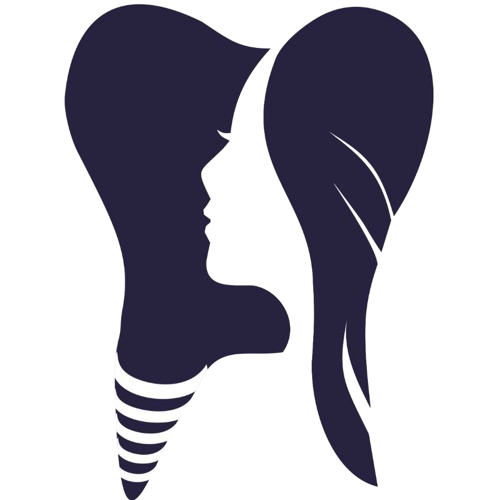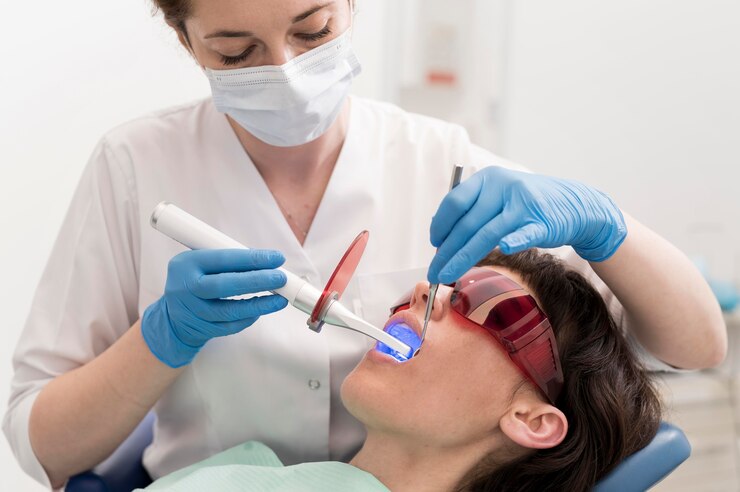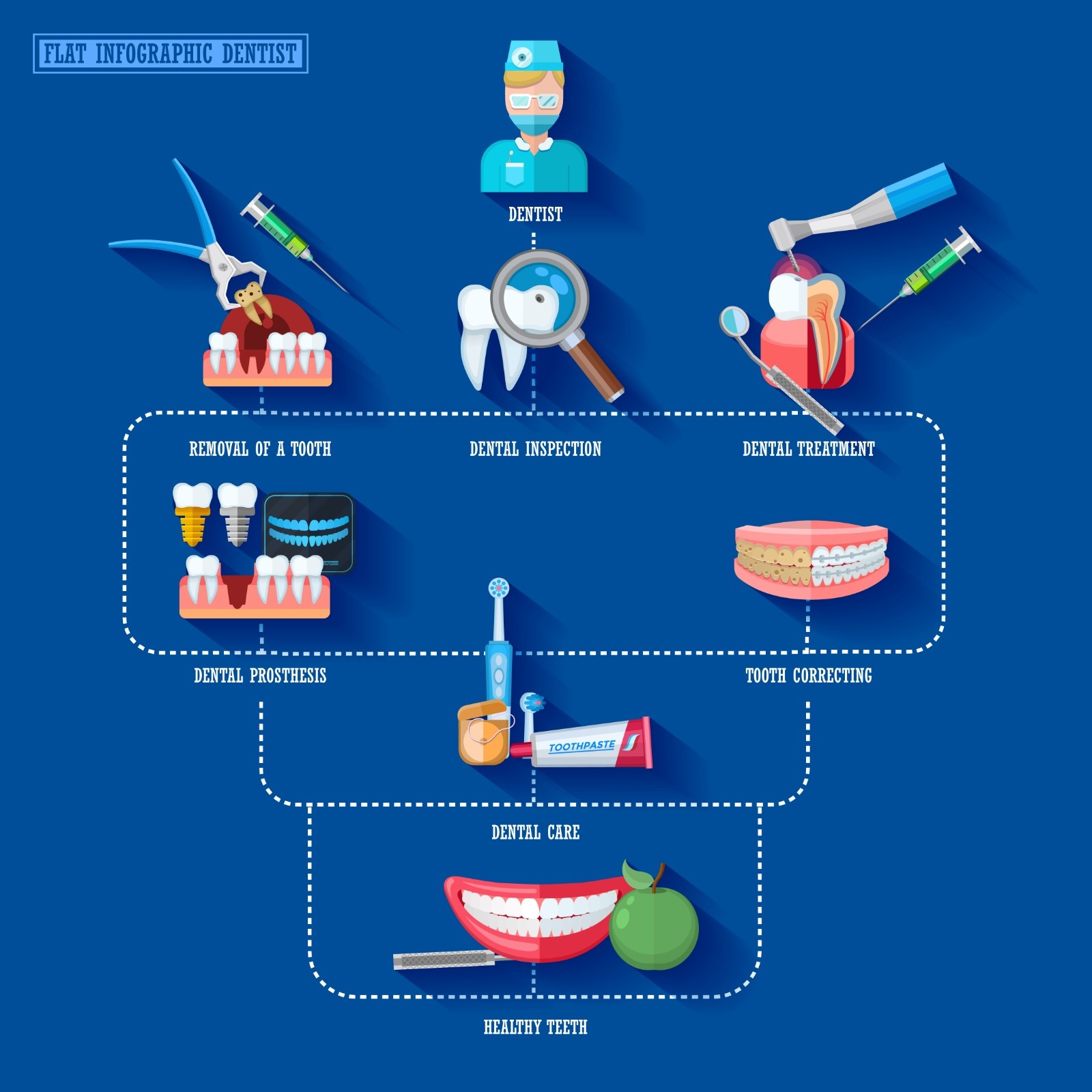Laser Dentistry Vs General Dentistry
Is laser dentistry better?
Laser dentistry provides patients with a better experience and quality. Even though laser dentistry is mainly associated with cosmetic treatments, it is equally effective for preventative purposes. It potentially offers a more comfortable treatment option for a number of dental procedures involving hard or soft tissues compared to drills and other non-laser tools.
What are the Different Advantages of Laser Dentistry over Traditional Dental Treatments?
Pain
When it comes to pain, regular dentistry procedures tend to cause discomfort as compared to lasers. Regular Dental instruments cause vibrations, which may be painful to some patients. To remove discomfort and ease the pain, anesthesia injections are used.
On the other hand, laser dentistry is pain-free. It is fast and effective as it uses light and heat to perform a wide range of dental treatments.
Dental Bleeding
Your oral health is pretty important. So, when you opt to have dental treatment, it might cause bleeding during treatments and discomfort.
But if you opt for laser dentistry, there is no Dental Bleeding since the laser promotes immediate blood clotting by sealing blood vessels. Swelling is also negligible when using lasers.
Recovery
When it comes to recovery, it may take time to heal, making the tissue regeneration slower. For instance, if you want to remove one of your wisdom teeth, your gums are cut open to extract the tooth. This, in all probability, will leave you with a wound that will need time to heal.
In laser dentistry, tissue can regenerate faster, and minor wounds heal more quickly.
Bacterial Infections
Dental problems are mostly due to underlying bacterial infections of the teeth and Gums. Most common problems like Gum bleeding or pain in tooth are because of Bacterial infections of the Gums causing Gingivitis and Infection of the pulp of a tooth due to Dental Caries.
With regular dental treatment, resolving these chronic infections takes time and multiple appointments and dressings and redressings. The Benefit of using a Laser for such procedures is that Laser sterilizes the infected area with Heat and hence more accurately removes the Bacterial infections and hence gives better postoperative results.
How is Laser Used in Dentistry?
All lasers work by delivering energy in the form of light. When used for dental procedures, the laser acts as a cutting instrument or a vaporizer of the tissue that it comes in contact with. When used in teeth-whitening procedures, the laser acts as a heat source and enhances the effect of tooth-bleaching agents.
Instead of needles and drills, laser dentistry uses heat and light to treat Dental infections. That’s why the procedure is less painful.
Classification of Laser in Dentistry
The word LASER is an abbreviation for Light Amplification by Stimulated Emission of radiation.
The concept of lasers is based on Einstein’s theory of stimulated emission. Lasers are used in a wide range of medical and cosmetic procedures. Recently it has received attention in clinical dental settings. With minimal anesthesia, lasers ablate the hard tissues. Bacterial counts in root canals are also reduced with the help of laser treatment. There are different ways by which lasers are used in dentistry. During surgical procedures of soft tissues, good hemostasis can also be achieved with their use. The most common types are carbon dioxide (CO2), diode, neodymium: yttrium– aluminum–garnet (Nd: YAG), and erbium: yttrium–aluminum–garnet (Er: YAG) lasers. They are used for cavity preparation, tooth whitening, gingival incisions, and other applications.
Classification Of Laser in Dentistry According to Tissue
Lasers are categorized by various methods, however broadly, they are classified into two categories – hard or soft tissue lasers. This is because some are too abrasive for soft tissue while others aren’t abrasive enough for hard tissue. Some can be used interchangeably if their wavelength allows it.
Hard Tissue Lasers in Dentistry
The essential use of this laser is to cut the teeth with exact precision. It cuts into the teeth and bones with accuracy. This laser treatment is perfect during the cutting of the tooth structure.
The wavelength from the intricate tissue laser is highly absorbable by hydroxyapatite. Besides, the lasers include Erbium Chromium YSGG and Erbium YAG.
Hard tissue laser also helps in preparing or shaping the teeth with composite bonding. It helps in the removal of small tooth structures and the healing of dental tear fillings.
Some common hard tissue procedures include:
- Cavity detection
- Dental fillings and tooth preparations
- Treating tooth sensitivity
Dental Soft Tissue Laser Procedures
Soft tissue lasers can highly absorb water and hemoglobin, making them suitable for treating problems in the soft tissue. Likewise, the soft tissue lasers include Neodymium YAG with diode lasers. It helps in killing the bacteria in the mouth and helps reactivate the growth of the tissues.
Some common soft tissue procedures include:
- Treating gummy smiles
- Crown lengthening
- Treating tongue frenulum attachment
- Removal of soft tissue folds
Classification According to Various Laser Treatment For Teeth
You must be curious about what laser dentistry is used for. Well, there are a lot of dental treatments that are being replaced by pain-free laser dental treatments like:
Removing benign tumors
Lasers can remove tumors from the palate, gums, and sides of the lips and cheeks through pain- and suture-free methods.
Dental fillings
Local anesthesia and traditional drills are often not needed with laser treatments. Lasers can kill bacteria in a cavity, which can aid in the long-term health of a tooth.
Treating tooth sensitivity
Teeth that have sensitivity to hot and cold can be treated with dental lasers that seal tubules on the tooth’s root.
Treating a “gummy smile”
Lasers are used to reshape gum tissue associated with a “gummy smile” in which the gums’ length covers much of the tooth.
Crown lengthening
This procedure reshapes both gum tissue and bone for healthier tooth structure, which helps with placing restorations on the teeth.
Treating tongue frenulum attachment
Those with a thick or tight frenulum (the fold of skin under the front part of the tongue that anchors to the mouth floor) may benefit from a laser frenectomy. This treatment helps children whose restricted frenulum causes them to be tongue-tied, have difficulty breastfeeding, or have a speech impediment.
Removing soft tissue folds
Lasers can remove soft tissue folds from ill-fitting dentures without pain or sutures.


